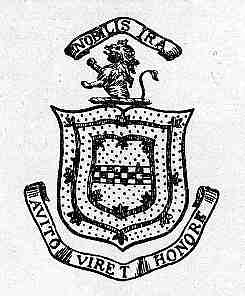When in the autumn of 1807, British merchants were ordered to leave the country due to French preassures, Captain Mac Kinley, R.N. played an important role, as senior officer on the Lisbon station, in protecting the property of the British Factory members and bringing them safely aboard British vessels. Among the merchants who afterwards presented Cap. Mc Kinley with a gift was Mr. Richard Sealy.
He had at least two children: George Timothy Sealy, (Lisbon, 07.09.1781) and Mary Harriet Sealy, (Lisbon, 1.02.1784 – d. 29.06.1811).
His son George married in 5.11.1809, Sophia eldest daughter of George Roach Esq., of Liverpool and of Lisbon, who died at Lima, Peru in 16.07.1835. George Sealy was British Vice-Consul at Lima, Peru. He was established by 1820’s in Brazil with a firm Sealy & Co which was dissolved in 1826.
Mary Harriet Sealy in turn, married in 17.05.1809, at Saint George, Liverpool, Dr. Henry Herbert Southey MD (Edinburgh), FRCP (London), FRS, Honorary DCL (Oxford) in 1847, b. Bristol 18.01.1784, the younger son of Robert Southey, a linen draper, (c. 1745 – c. 1792) and his wife (m. 25.9.1772), Margaret Hill (b. c. 1752 in Somerset, died 5.1.1802 in London). He was the younger brother of the famous poet Robert Southey born 12.8.1774, who refers Richard Sealey, his brother's father-in-law in some of his letters.
Of Richard Sealey two different bookplates are known in Portuguese collections(both NIF).
The one, that seems to be the oldest - in oval shape (see above) - was first published by the collector Jaime Augusto Moura, in the «Archivo Nacional de Ex-Libris», I vol. nº 5, December, 1927, pp. 83-84, referring also the second bookplate which had been previously revealed by another famous collector and writer Col. Henrique de Campos Ferreira Lima, in the earlier «Revista de Ex-Líbris Portugueses», vol. II, p. 135.But as it usually occurred in those days, little information was given on the bookplate owner, apart from being a British merchant.
The British armorials do not give arms to this gentleman or family which is not at all anormal, since many commoners adopted arms of a given surname without registering then at the College of Arms.
Having lived so long in Portugal it is natural that his bookplates, although not very common, appear in Portuguese bookplate collections.






,.jpg)























































